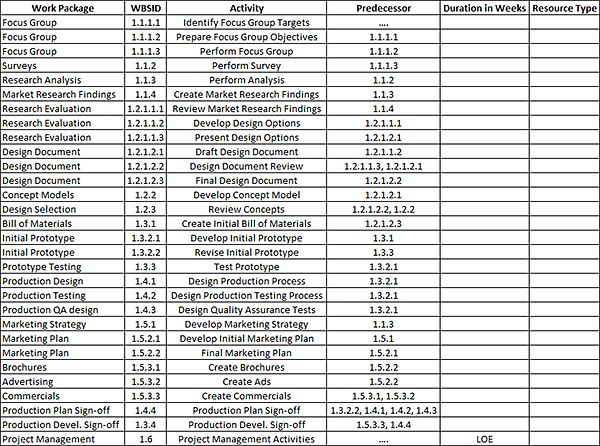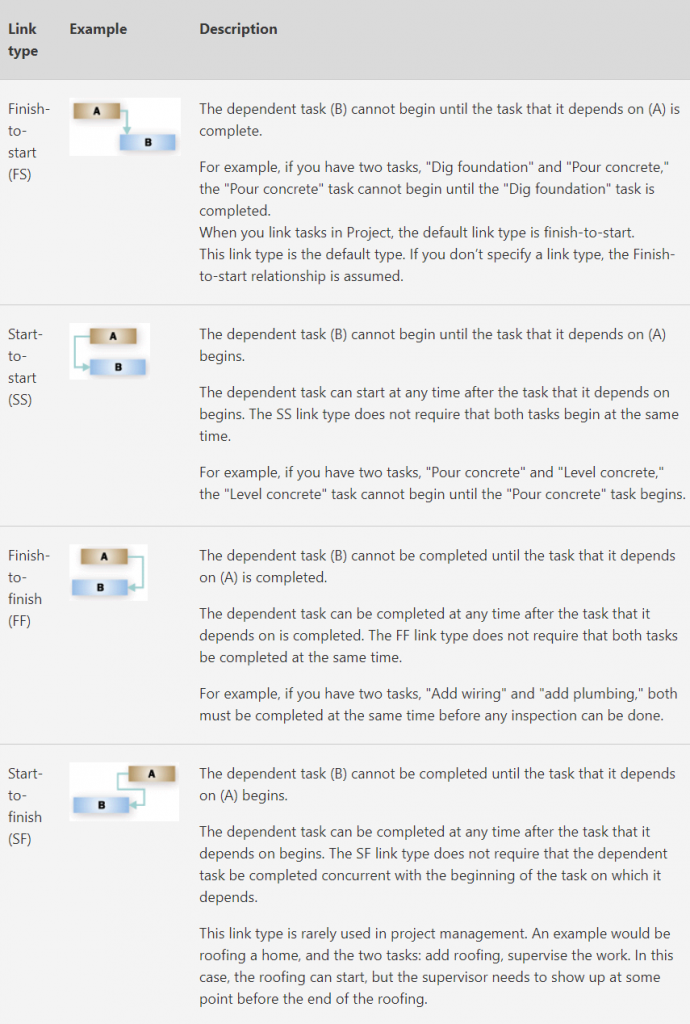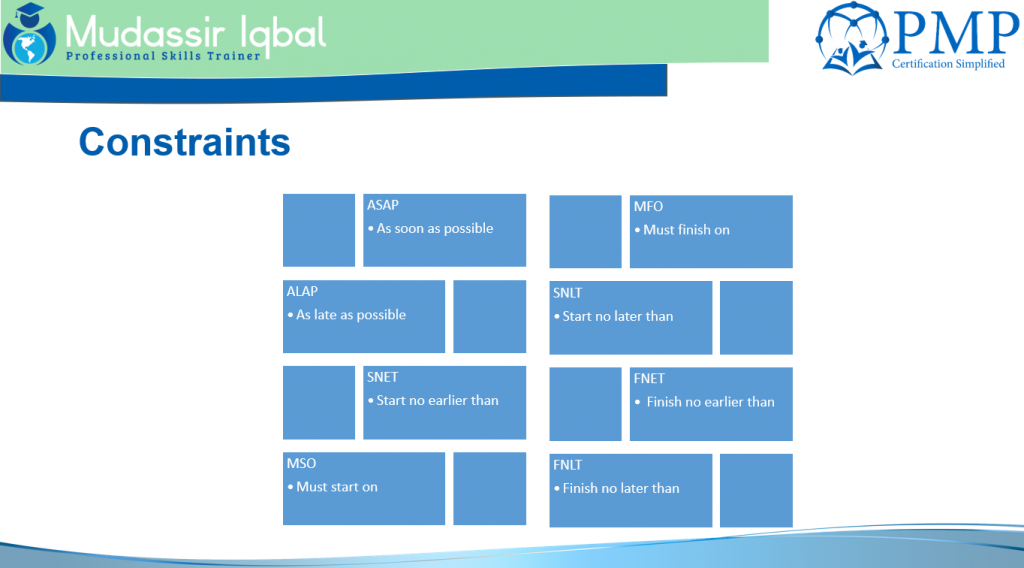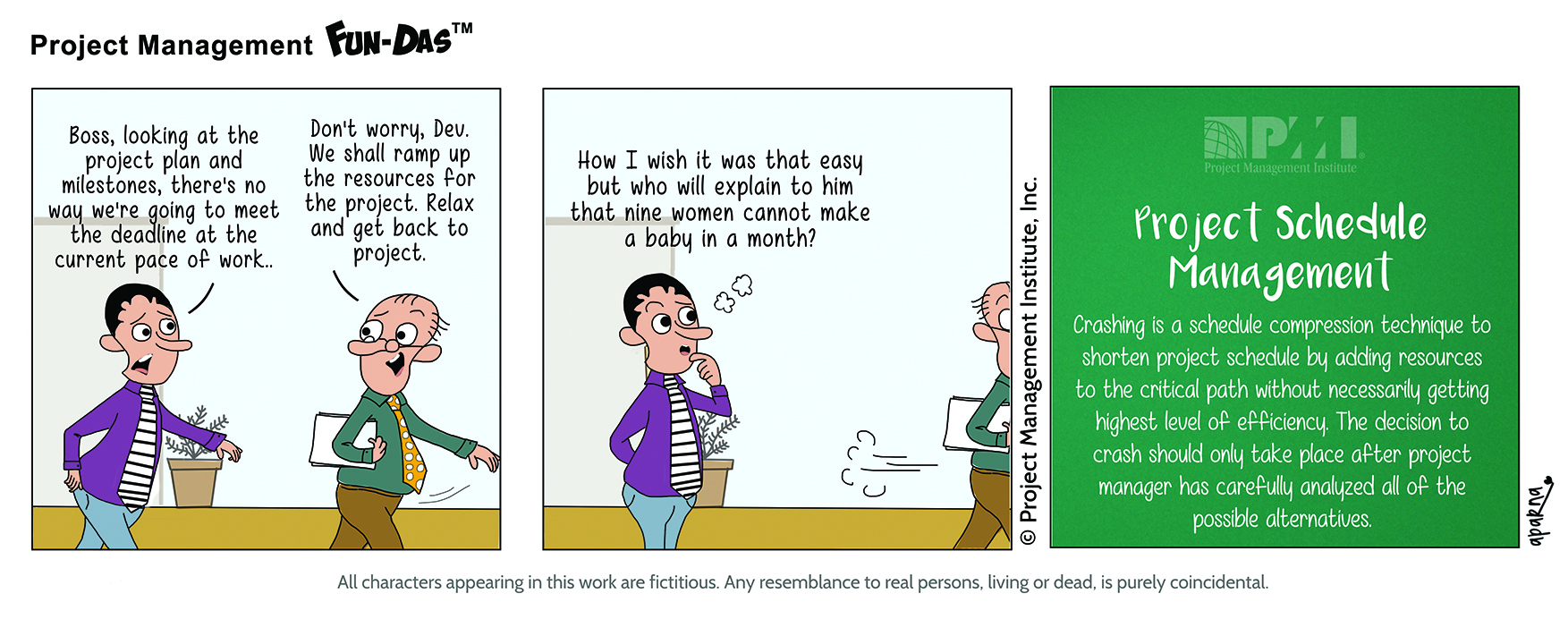Project Schedule Management
Defining an effective Project Schedule, is this an art or Science? Through Project Schedule Management process we are
estimating the future, something we have no control over. A key responsibility of project managers is to create a practically feasible project schedule. Prior to the execution of the project, the project manager needs to identify attainable project end date. Schedules are fundamental to the control of the project and you should be proactively working on getting a workable and realistic Project Schedule. A project is made up of many activities, with a start and end date, so the project can be completed on time. These dates are affected by the availability of the resources, which are not abundant and free at will, therefore their availability needs to be documented in order to successfully plan those tasks.
So in short to achieve good estimates we will decompose High-level requirements into deliverables presented in the form of a work breakdown structure, which are then decomposed into activities and we will develop a schedule from them
Project Schedule Management Processes
Plan Schedule Management
Schedule Management is the process of formulating the guidelines, procedures, and credentials for forecasting, developing, running, implementing, and controlling the project schedule. The following items will also be addressed in this plan:
- How big the contingencies are, and how they will be measured
- Are there any resources available that have an effect on the schedule?
- Are there any task dependencies on which the project depends?
- There might be a software or standard processes for updating the schedule
- Stakeholders who approve the schedule
Define Activities
Define Activities is a process of identifying and documenting particular actions to be performed to produce the project deliverables. In scope management, the WBS results in work packages. The WBS is a deliverable-oriented visual hierarchical reflection of all the work in the project. In order to produce these deliverables, work must be performed. These deliverables are used as inputs in the define activities process. The activities make sure that work packages are delivered. Every activity is estimated, scheduled, supervised, and managed. There are certain rules of thumb to determine the activity list:
- The tasks should be broken down to produce a reliable estimate
- Every deliverable must have a clearly defined task
- Only one party should be accountable for the completion of a task
- Match tasks to cost accounts
- It should be easy to make the task measurable
Sequence Activities
Once the project is divided into tasks, the association between them must be determined. Typically, a task begins when the previous one ends. It’s a process of identifying and documenting relationships between the project activities. An important advantage of this process is that it outlines the logical sequence of work to attain the utmost efficiency given all project limitations.
Estimate Activity Durations
To figure out the availability of resources, a project manager accesses a document known as the resource calendar. It’s a procedure for estimating the number of work periods required to complete individual activities with estimated resources. Estimate Activity Durations offers the amount of time every activity will take to complete. It’s a foremost input into the Develop schedule process. You may be employing any of the following technique to estimate the duration of the tasks;
- Expert Judgement
- Top Down/ Analogous Estimation
- Bottom-up Estimates
- Parametric Estimates
- Three-point Estimates
Develop Schedule
Develop Schedule is the process of evaluating activity sequences, periods, resource necessities, and schedule restraints to develop the project schedule model. In this process, the most effective schedule for the project is developed. It also refers as the official start and end dates for every task. Critical path method is used to determine when to schedule the work, order equipment, highlight internal resources, and the shortest possible project completion date. The process produces a schedule model with planned dates for implementing project activities. It assists in entering schedule practices, resource accessibilities, and logical relationships into the scheduling tool. Through this process we try to answer three basic questions;
- What needs to be done?
- When will it be done?
- Who will do it?
To do the better estimates we may need to consider many uncertainties and assumptions.
Control Schedule
Change is imminent, no one can run from it. So no project can be executed without changes to the original plans and schedules and this process will run throughout the project. In the monitor and control phase, the deviance from the schedule baseline can be evaluated and acted upon. So here we are “working the plan” in comparison to “Planning the work” of earlier processes.
Key Deliverables for Project Schedule Management
Schedule Management Plan
A Schedule Management Plan is either a formal or informal part of the project management plan. It advances the schedule estimation procedure by providing strategies on how these estimates should be stated. The Plan also deals with methodologies includes critical path method (CPM) and critical chain Method. It also identifies the formats in which schedule will be shown like the Gantt Chart. Gantt Charts uses horizontal bars on a timescale to show the start, duration and finish dates of the work package or activity.
Schedule Baseline
A schedule baseline also is known as the approved project schedule which is decided by project stakeholders prior to the project begins. It’s a security measure used as preparing mark against which the progress on the real project schedule can be estimated. While creating a schedule it is important to keep a note of your surroundings, the organization structure, the stakeholders and the project itself, as one size doesn’t fit all.
Schedule Forecast
Forecast schedule is the practice of updating the project schedule periodically to keep the project end dates updated. It provides the most relevant prediction of scheduled end dates.
Further Readings
*Examination Note:
A lot of project management software are available on the market that can be used to assist with scheduling in real-life ventures. though, for PMP examination, one must understand the procedure of scheduling a project. It’s crucial to get familiar with the network diagram that is drawn manually and answer the queries regarding network diagrams and scheduling.
On some projects, especially those of smaller scope, defining activities, sequencing activities, estimating activity resources, estimating activity durations, and developing the schedule are so tightly linked that they are viewed as a single process that can be performed by a person over a relatively short period of time.







One thought to “Project Schedule Management – PMP/CAPM”
Primavera software helps inside planning, controlling, and managing project charges, resources, and activities easily and efficiently, and that is why this amazing project management application is used worldwide.